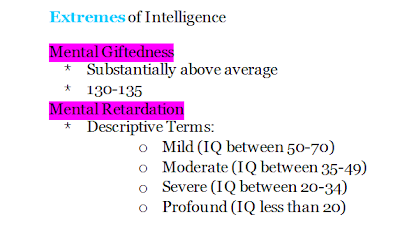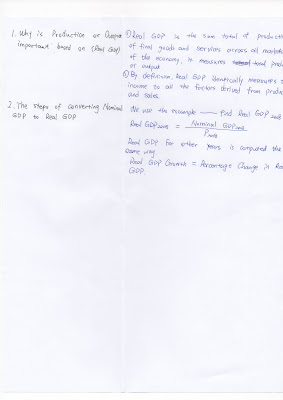Hey girls! Do you enjoy the time spend with your parents?
For this week, I tried TART and CHARLIE READS SMART on my ECN 203. The reason why I choose to use both the strategy on my ECN 2O3 is not for the textbook is hard to read and understand, but for I treat it as one of the information resources for my class notes. Since in my ECN203 classes, my professor pay all the attention on his powerpoint but not mention the textbook; and all my exams are all about his lecture information and powerpoint, not have business with my textbook also. So even now it's mid-term time, I didn't read my textbook much. However, for this week, I decide to read my textbook for Chapter 11, which is the beginning of Macroeconomy. I found there were a lot information in the textbook, even the professor didn't mention them and the exams wouldn't cover them, but understanding them will help me understand other important terms much better.
Now, let me talk about TART first.
Amazingly, I am the combination of four types of learner! But I still prefer Visual learner. So when I read the terms in my textbook at the first time, I highlighted those terms in blue and create their abbreviations at the marginal of each page. It will help me to remember the full and abbreviations of terms at the same time and I will know where can I find them just by checking the margin. Here are two pages of textbook shows what I did as an example.


After I read all the terms and definitions, I had the basic idea of what will my professor talk about during his lecture. Then, I went to his lecture on Wednesday and Friday.( On Monday, we took the second exam so we didn't have a lecture) I made notes during the two lectures. When the professor come across the terms, I will draw line under those terms! Since I am an international student, right now I cannot take notes and listen to my professor at the same time. So I did bring my recorder to class, and listen to the recording after each class. ( As a result, the blue part on left side are notes I took during the classes and black part on right side are notes I took when I listened the recordings) Again, I draw lines under each terms or use capitalize them or circle them. ( I didn't have enough time for changing different colors when I took notes) Here are some pictures of my notes.


At the end of the whole week, which was at Friday night, I read all pages of Chapter 11. Since I had learned those terms for at least twice, I felt it's easier and faster for me to read, understand.
The time when I finished reading, I created a quiz for myself. On the left column, I wrote down questions in blue and then answered them in black on the right column. Here is my DIY-QUIZ:
As those questions were based on the information from textbook and my notes, they all about definitions and functions. I can find out the answer directly from my textbook or from my notes.
I am suitable for visual and kinesthetic learning methods, as a result, I found that TART provided me a good way to read my textbook efficiently. Especially for the past half of the semester, I ignored the importance of reading textbook. Even though my professor will not pick up exams questions from textbook, but it's still worthy for reading it. For more complete information materials and for better understanding principles.
At the same time, I also tried CHARLIE READS SMART on the same ECN203 classes.
The first step, I chunked my reading assignment.
According to my real situation, I made some changes. First of all, since my perfect time for my attention span is 20-25 minutes. The time I read textbooks, I also love to making notes or drawing graphs to help me understand them, so I decided to chunk time period based on the number of pages I can finish read with 15 minutes. That means the total time for each of my chunk is 25 minutes ( 15 minutes for merely reading and 10 minutes for taking notes or drawing graphs).
Second, based on the contents, I divided the whole chapter into 4 parts. They are: Intro. Macro& Micro; GDP; Labor and Price Line. According to their difficulty, Micro& Macro is the most simple part. So I decided to read pp 157- 161 in a chunk. For the most hard part, GDP, I read pp162-163, pp 168-169 ( total 2.5 pages) in a chunk. The easier the content, the more pages in a chunk. Otherwise, the harder, the fewer pages in a chunk.
So, finally, here is my chunk plan.
pp 157-161 Intro. Macro& Micro
pp 162-163, pp 168-169 GDP
pp 163-166 Labor
pp 166-167, pp 170-172 Price Line
For reading, because my professor's syllabus didn't mention reading materials for each class, so what I did was turning the heading into a question and read for the answer. And marked the parts which related to my powerpoint. As a result, I knew we will focus on GDP, LABOR AND PRICE LINE, but not for INTRO. MACRO& MICRO.
The third step is Summarize. I made graph for words and definitions. For this chapter, what we do is merely generally introduce terms but not research on examples. So I just listed important terms and their definitions. For definitions, I highlighted the notation part.
And also, I created an outline of key words for Chapter 11.
For the last step, I didn't want to just copy those questions which I created for TART ( they are basic questions and I can find answers directly). So even though I only created 2 questions for TEST part, but they are both questions need to be analyzed and discussed with my professor. After I got the accurate answers, I wrote them down.
Comparing to TART, Charlie Reads SmarT is more helpful for me to summarize and review after I had already known the whole chapter and took all the lecture about the chapter. TART helps me to get to know the chapter, Charlie helps me to review.


 After the adaptations I made, I felt more confident controlling my time and being more efficient with time.
After the adaptations I made, I felt more confident controlling my time and being more efficient with time.










































 After done with notes, I create a table to quick review and
After done with notes, I create a table to quick review and